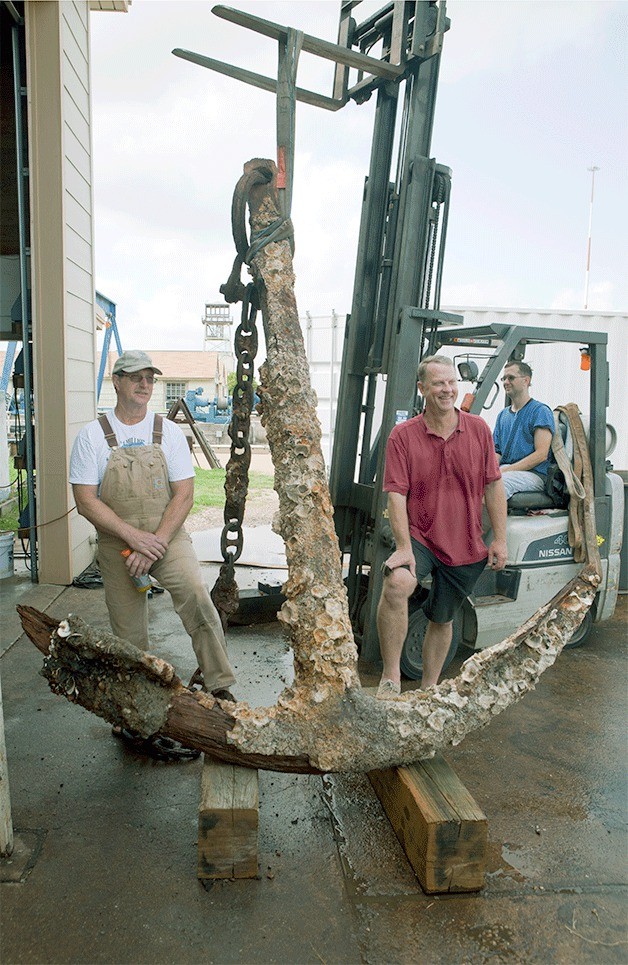By Joe Smillie
Peninsula Daily News
Researchers at Texas A&M University are now examining an anchor recovered from Admiralty Inlet last month to see if it is, as believed by those who recovered it, the anchor that broke off a ship in Capt. George Vancouver’s Discovery expedition June 9, 1792.
“It is a classic admiralty-patterned anchor,” said Jim Jobling, Texas A&M Nautical Archaeology Conservation lab manager.
“I feel fairly favorable this could have come from the Chatham.”
Doug Monk, a commercial diver from Port Angeles, and Scott Grimm, a medical device salesman and amateur historian from Seattle, delivered the anchor to Jobling and his team of researchers Monday morning.
Monk discovered the anchor when his airhose snagged on it while diving for sea cucumbers off Whidbey Island’s west coast in 2008.
A dive team pulled the 900-pound anchor up from Admiralty Inlet off the coast of Whidbey Island and brought it back to Port Townsend on June 9.
It stayed at the Northwest Maritime Center for two weeks while it was prepped for the trip to Texas and drew large crowds while on display there.
Jobling’s job now, said Grimm, is to prove the anchor is the one that log books from Vancouver’s expedition report was torn from the HMS Chatham by a quickly changing tide in the early morning darkness of June 9, 1792.
“We just have to let him go to work and prove we’re right, now,” Grimm said.
For decades, experts have believed the anchor that broke off the Chatham, companion to Vancouver’s HMS Discovery, was carried into Bellingham Channel.
The Chatham and the Discovery explored the North American west coast for four years beginning in 1791.
“This has got many, many interesting facets for us,” Jobling said.
“Whether it’s Vancouver’s or not, we may never be able to tell for sure. But it’s still a fascinating piece of European exploration.”
Grimm and Monk left Seattle with the anchor loaded in the tank built by Port of Port Townsend workers and placed on the back of a flatbed truck.
They put the tank atop old tires to absorb possible road shocks, used soaker hoses to keep the anchor wet during the trip and topped it all with a tarp.
“It kind of looked like that truck off the ‘Beverly Hillbillies,’” Grimm said.
Over the next 18 months to two years, Jobling and his students will apply corrosive chemicals, acids and even electricity to the anchor to rid it of the accretion that built up while the anchor sat on the floor of Admiralty Inlet.
He hopes they will find markings on the bottom crown of the anchor that will identify it as a piece of royal navy equipment, though he noted that doesn’t always happen.
“In the early days, the makers often didn’t put their names on the anchor. Because if it failed, then their name’s sitting on it, and no one wants to buy an anchor from them again,” Jobling said.
For Grimm, however, the case was closed long before the anchor was pulled up in the years he spent researching the anchor and English patent law and chain design.
“To me, it’s so far beyond a question, I don’t even think about it,” Grimm said. “This is the anchor.”



